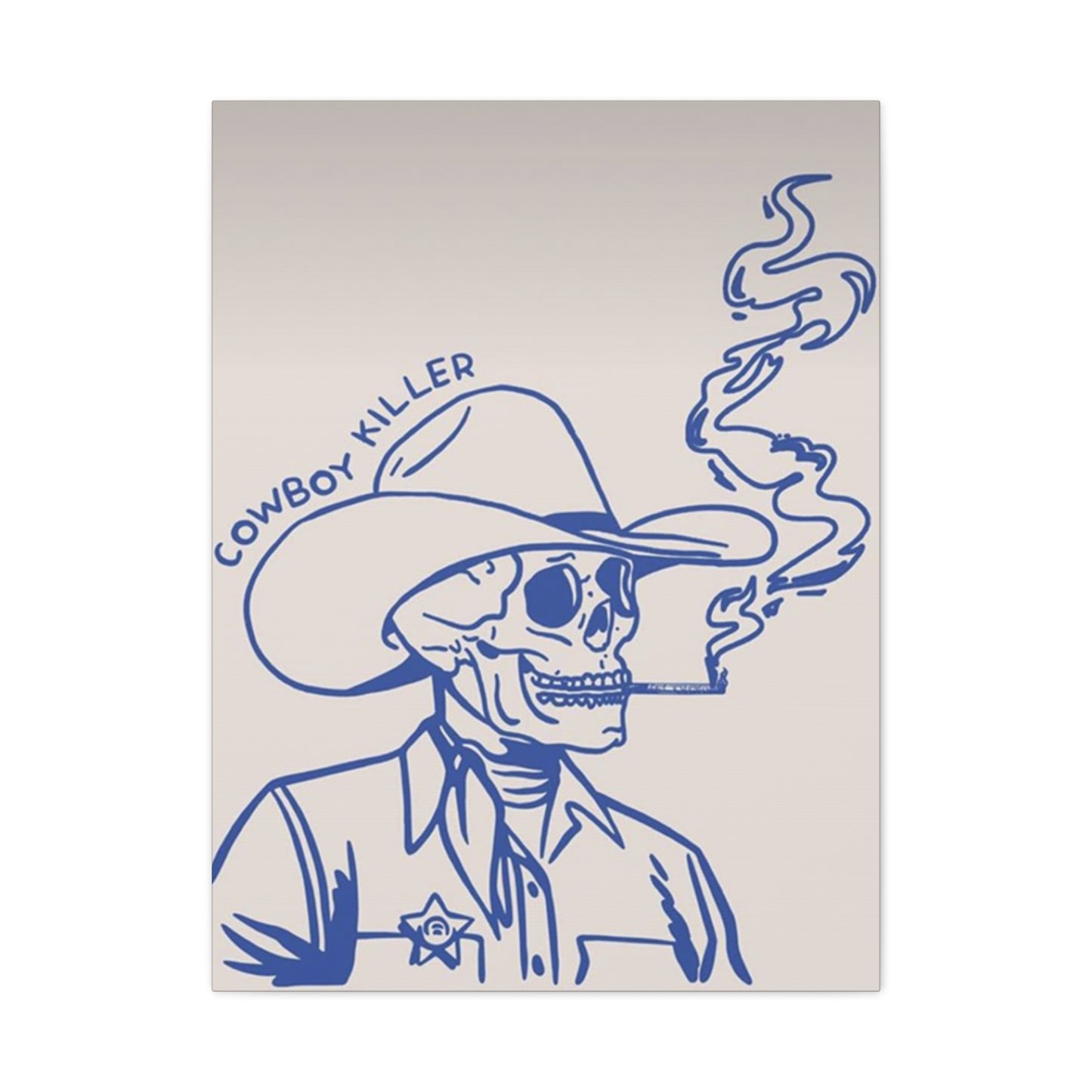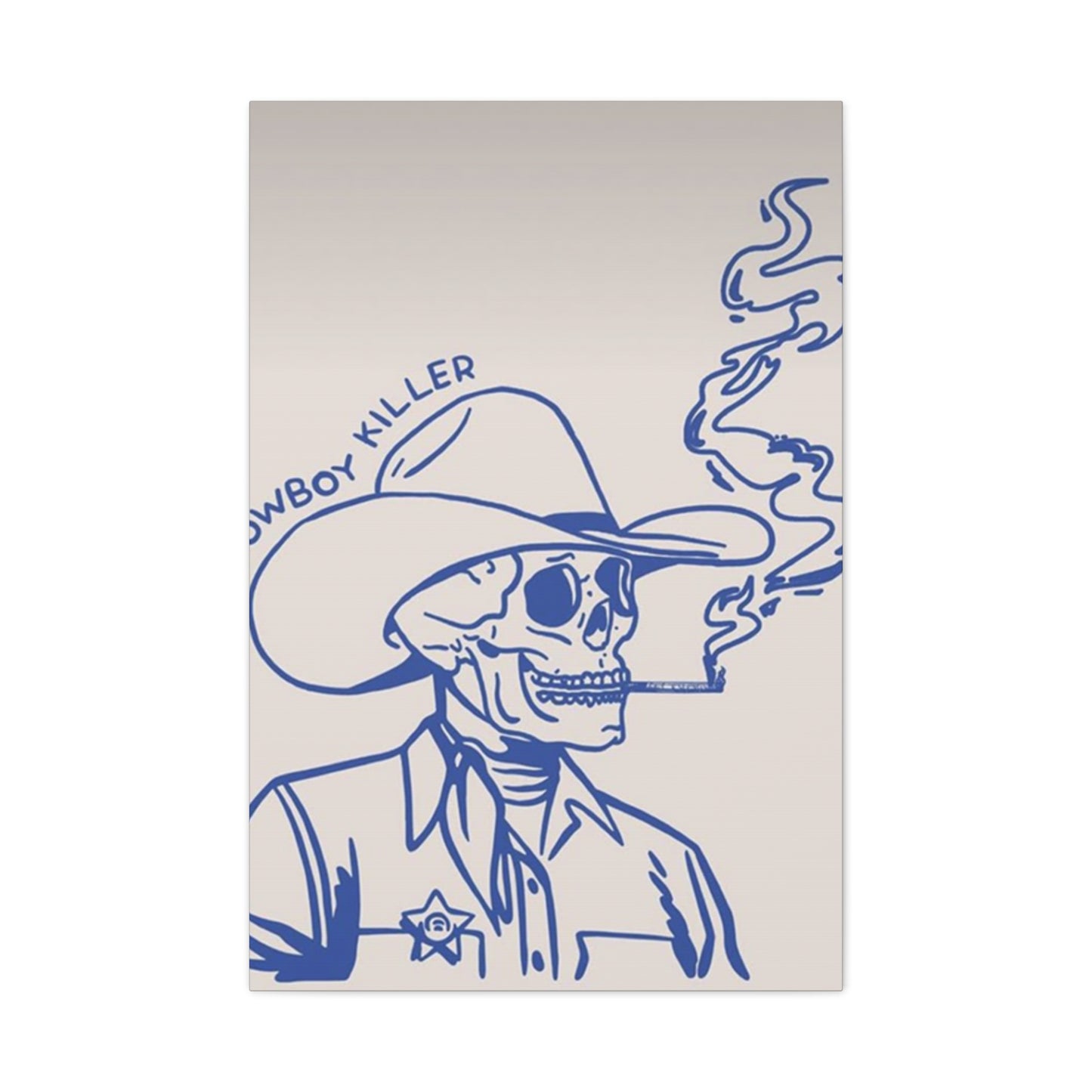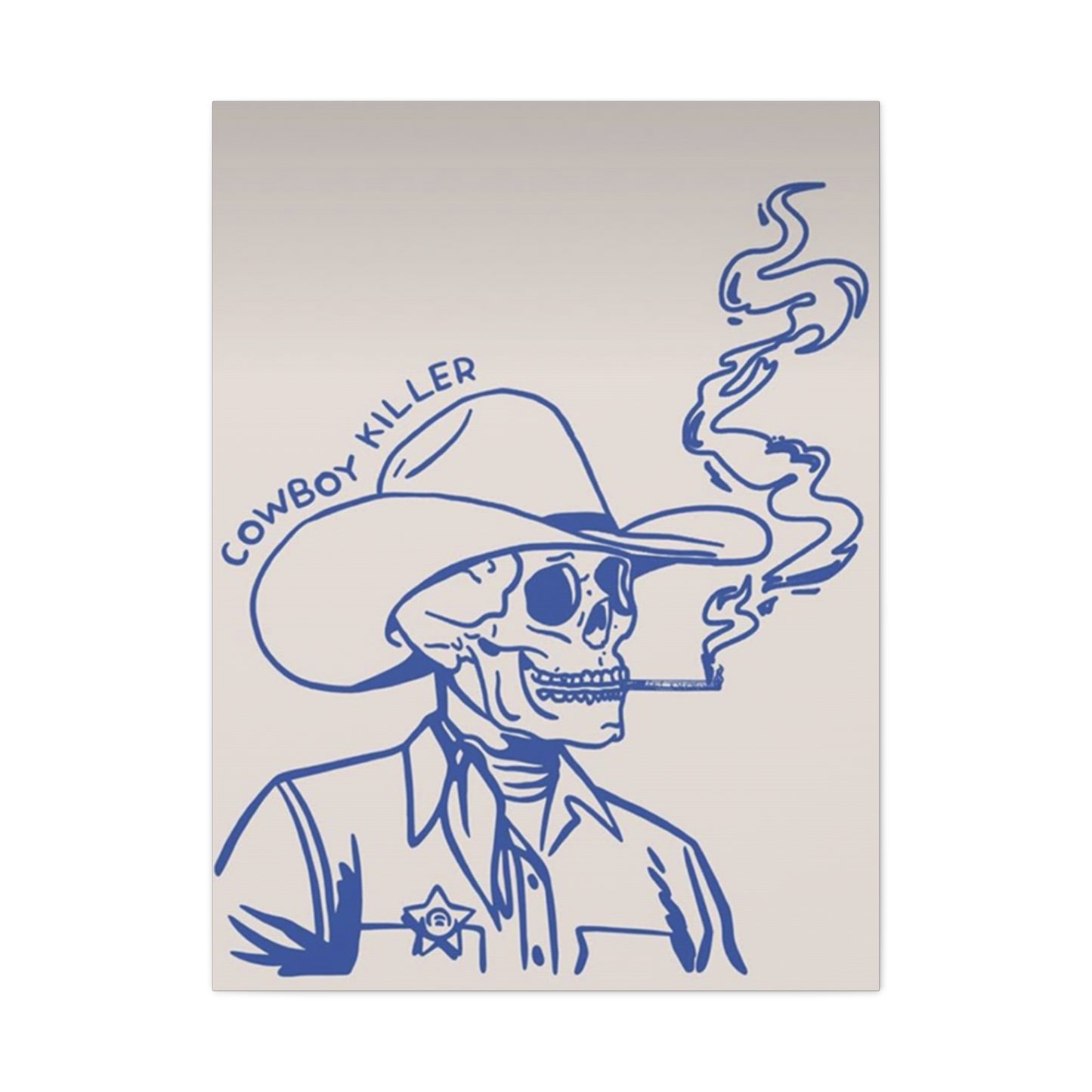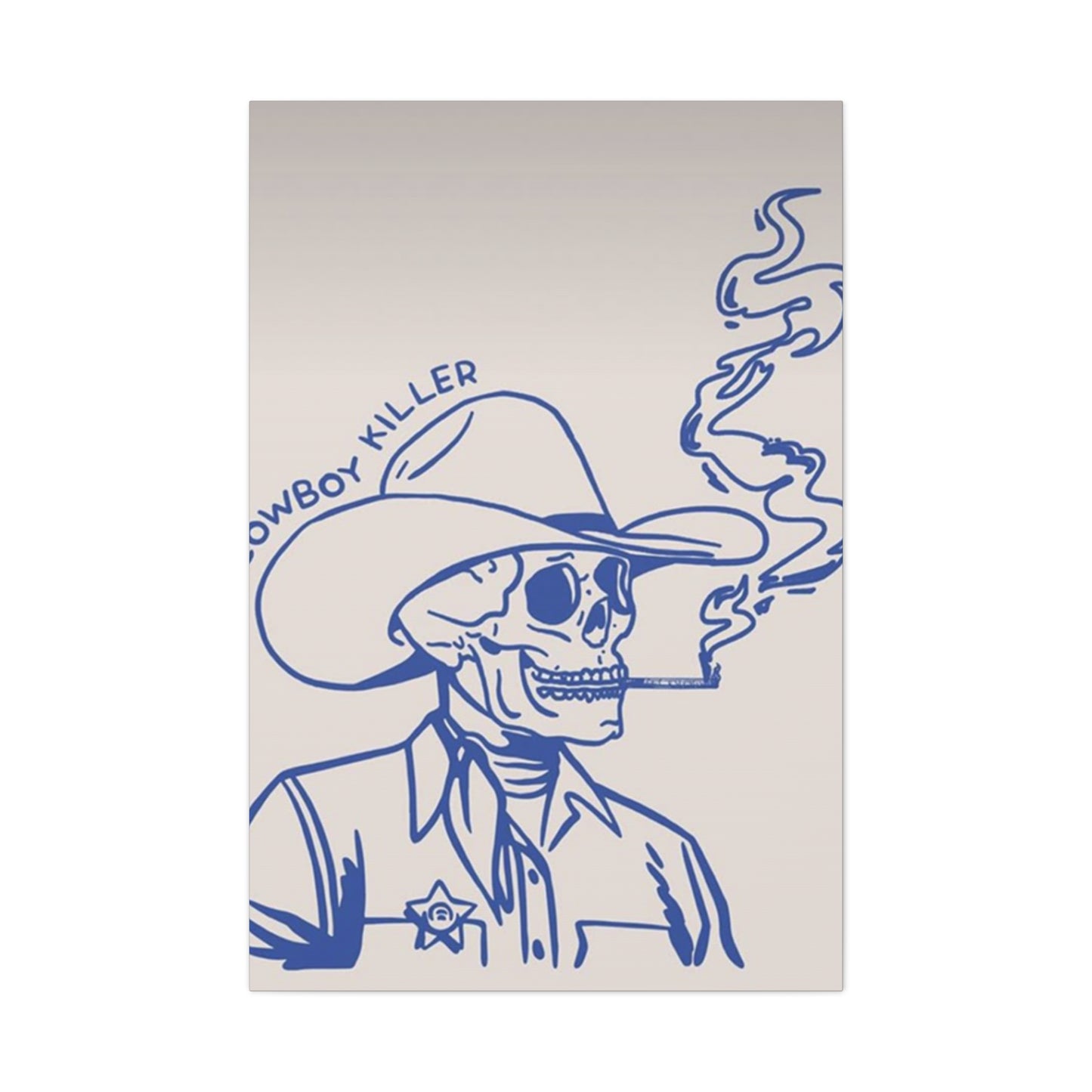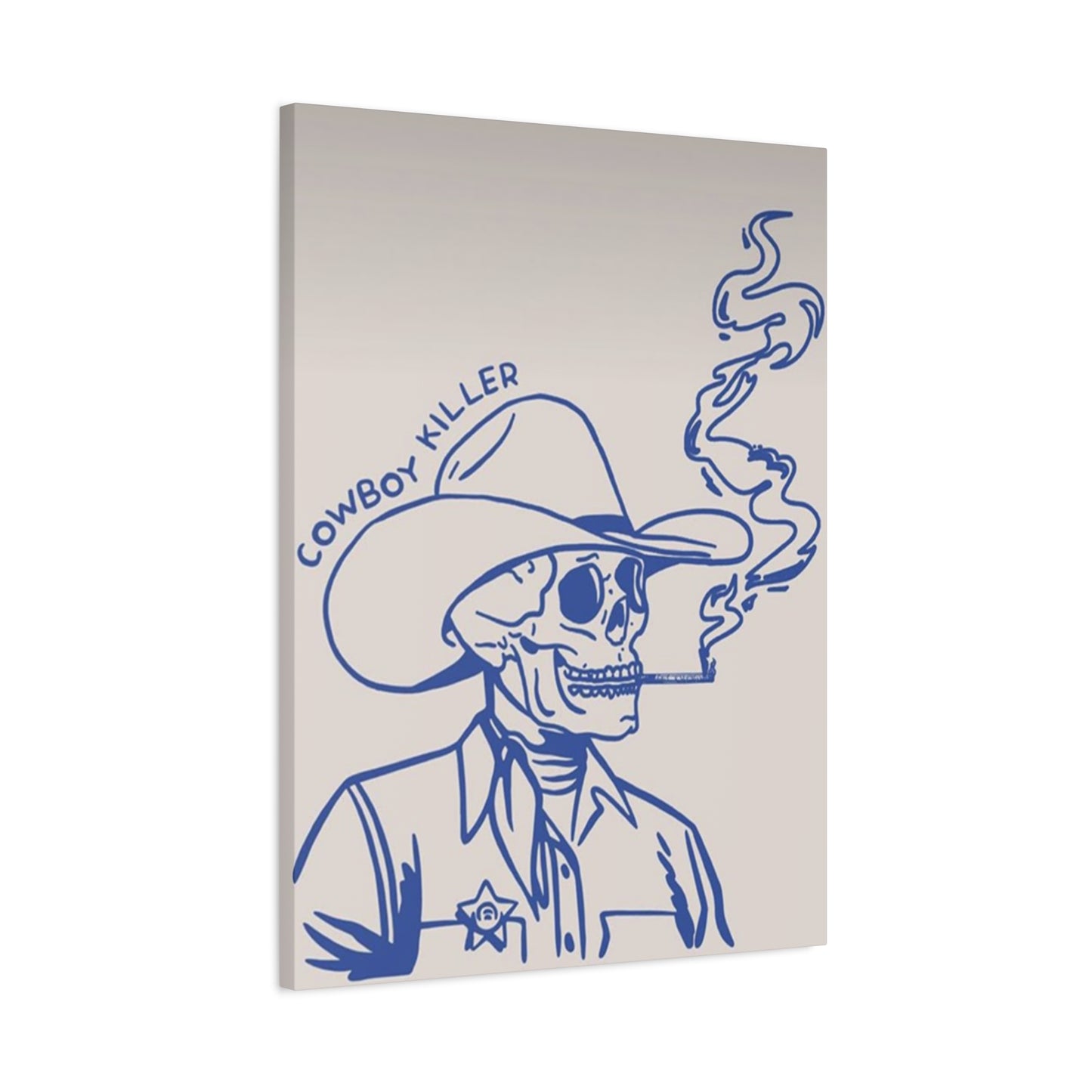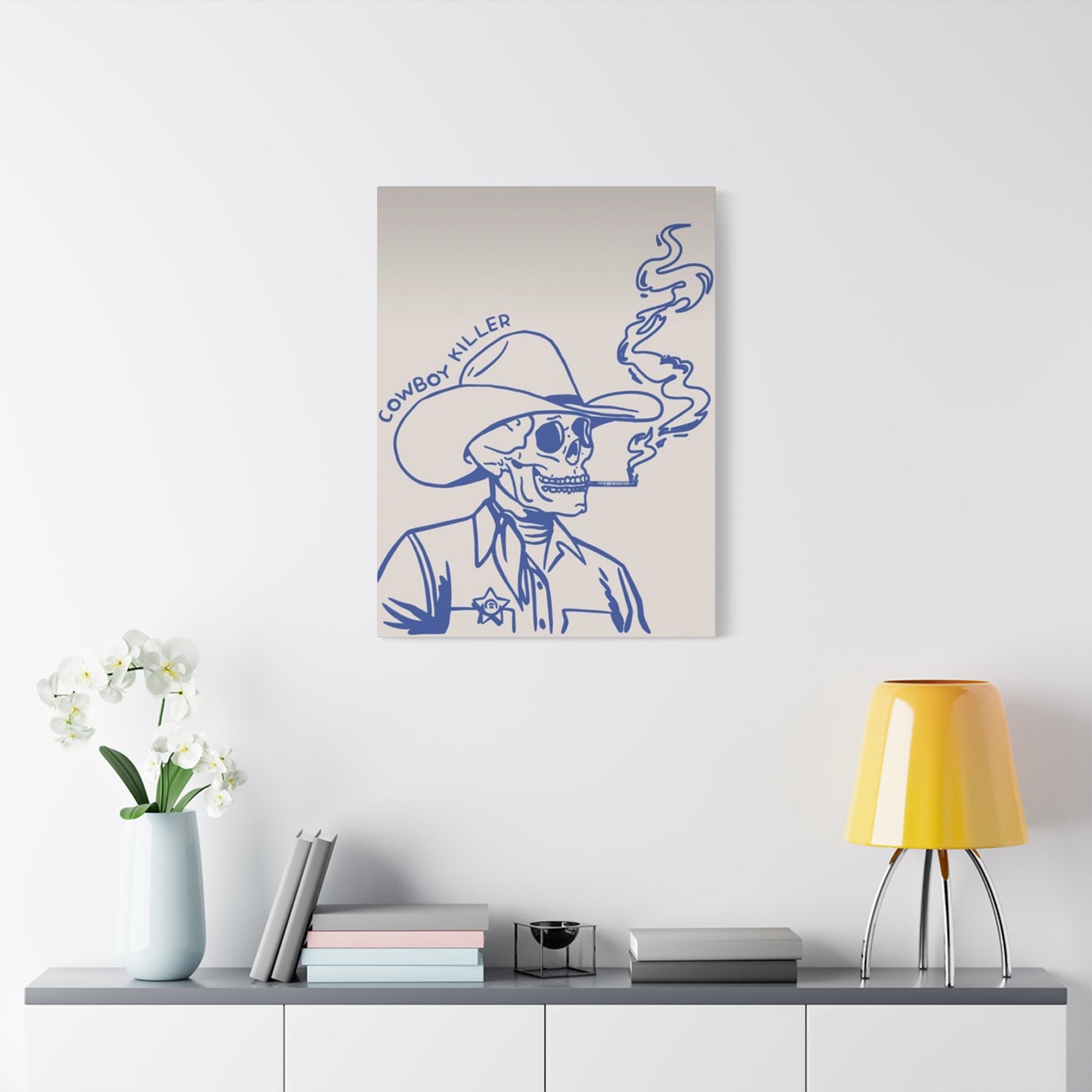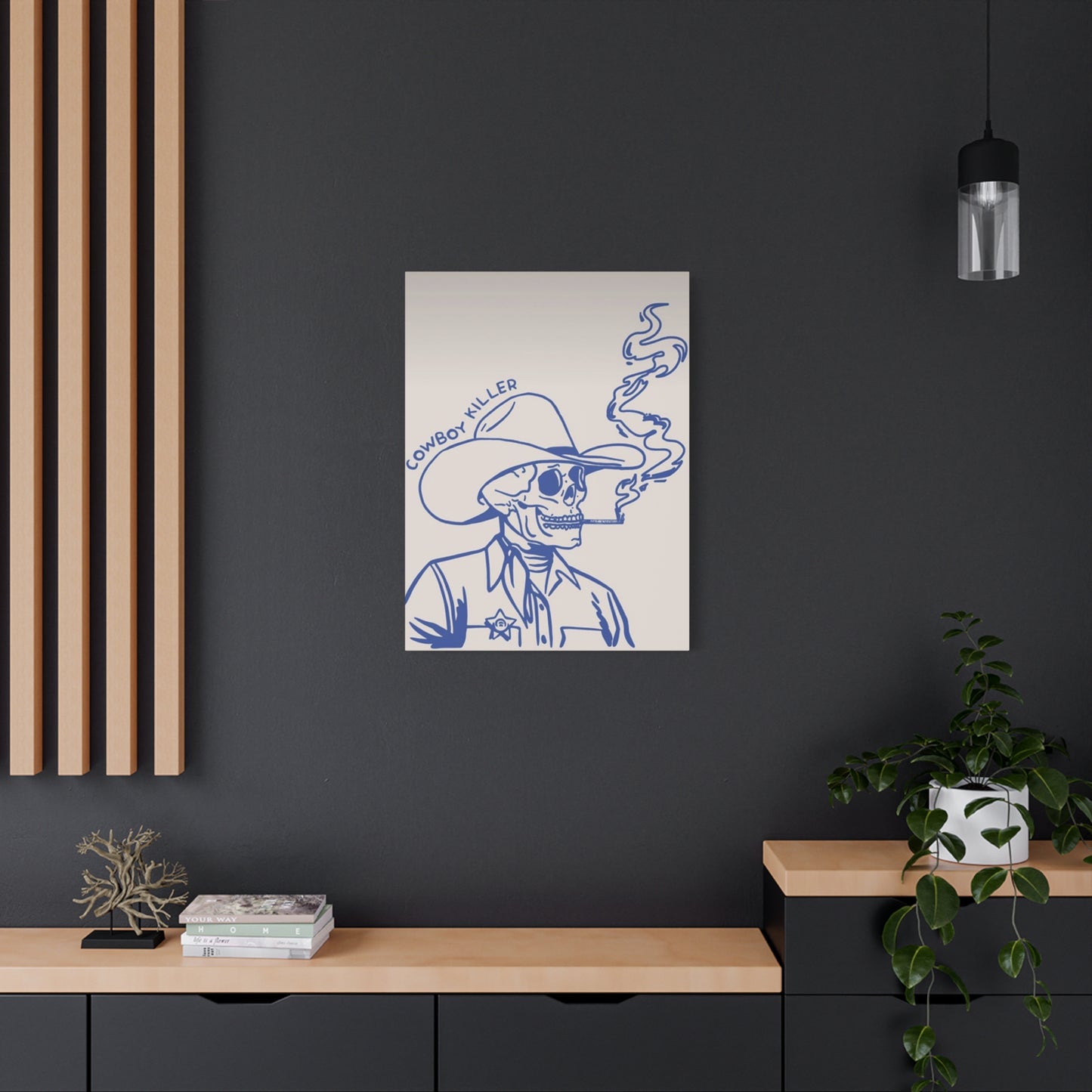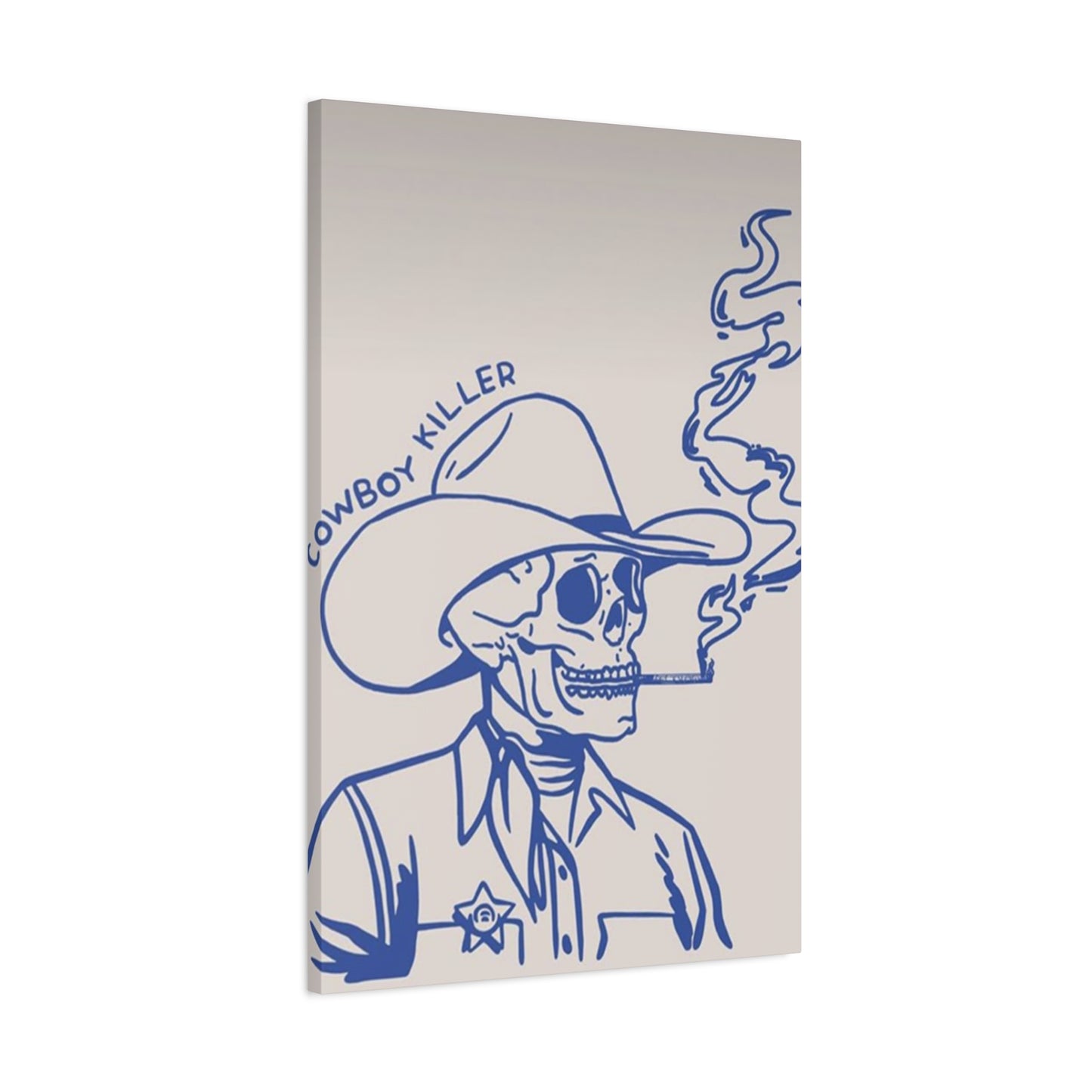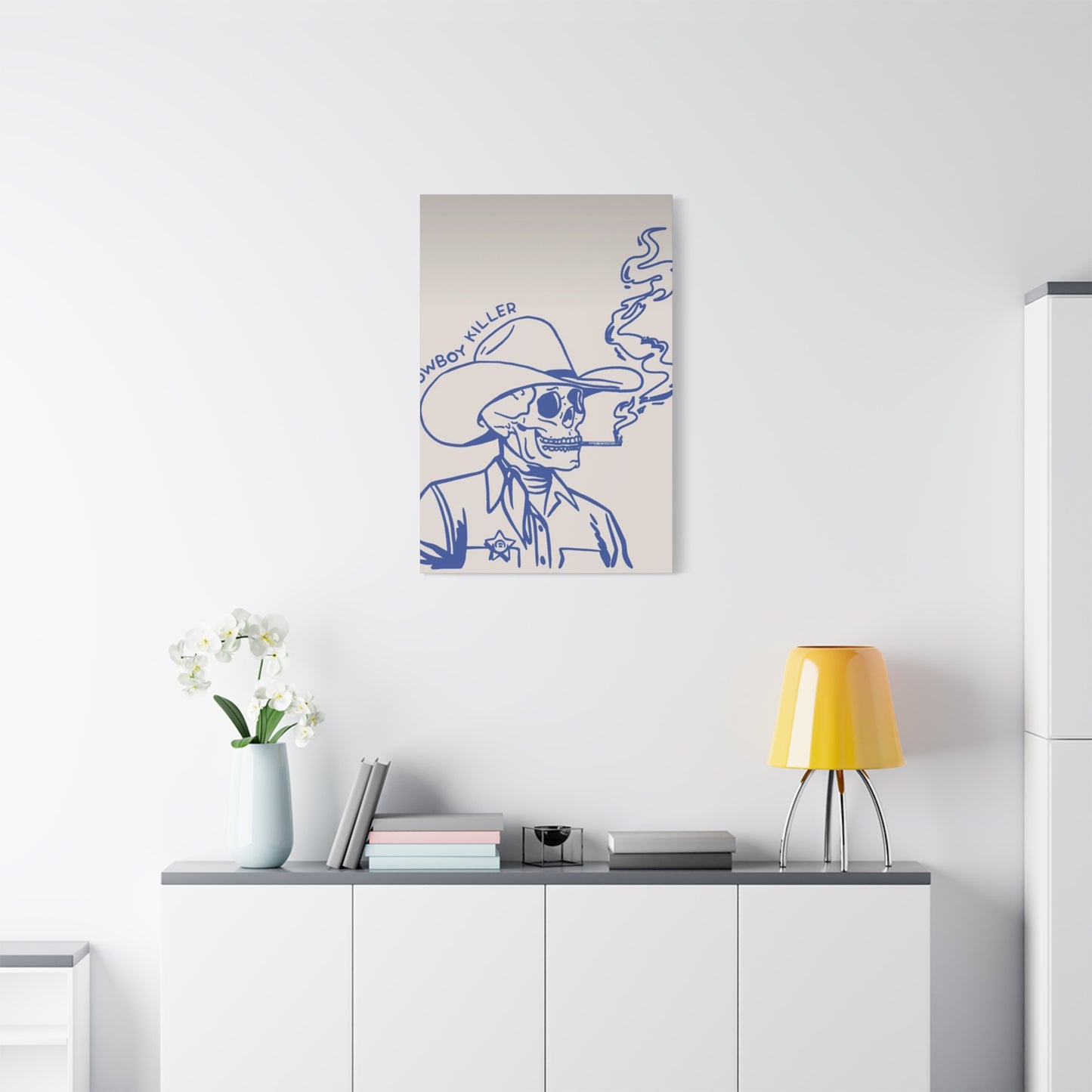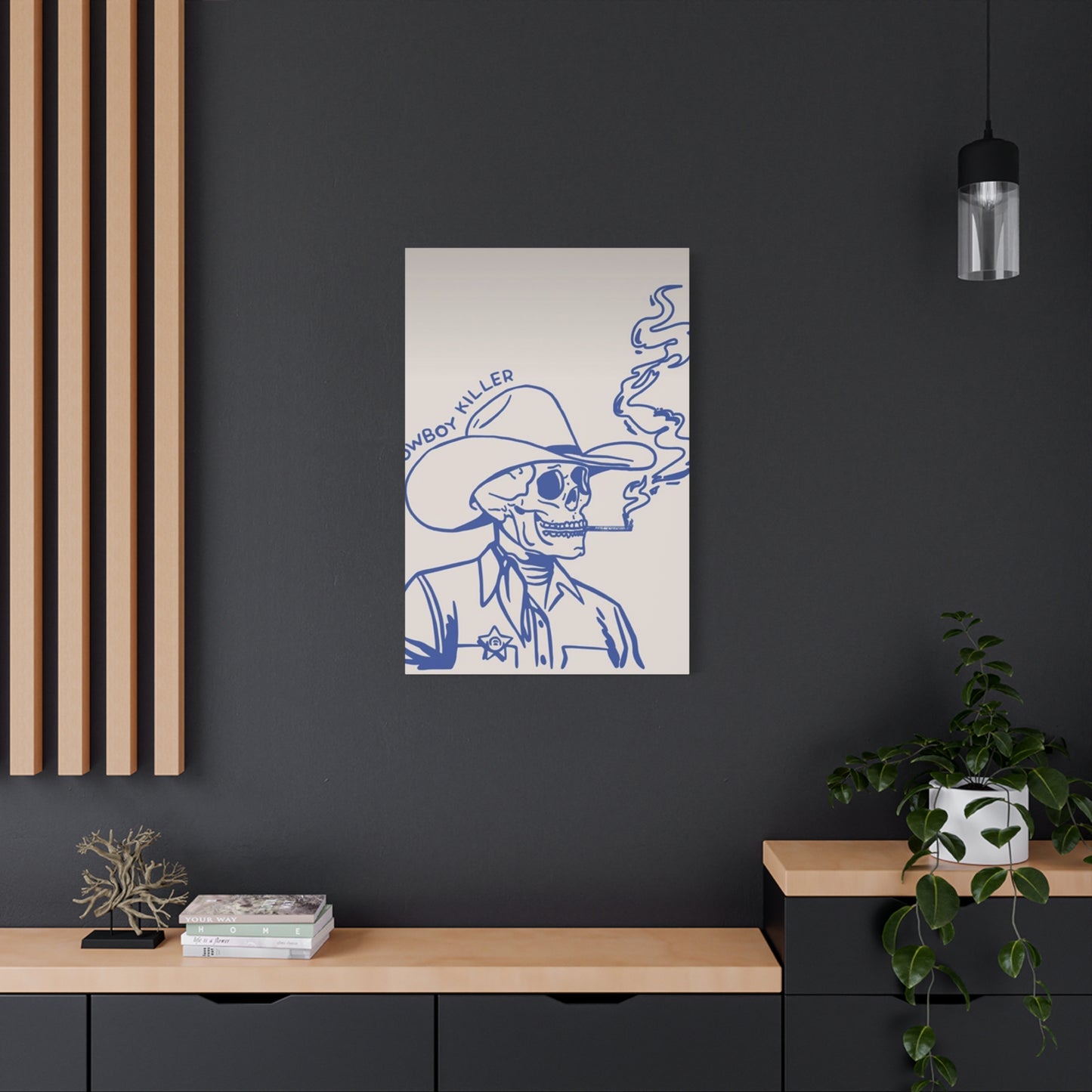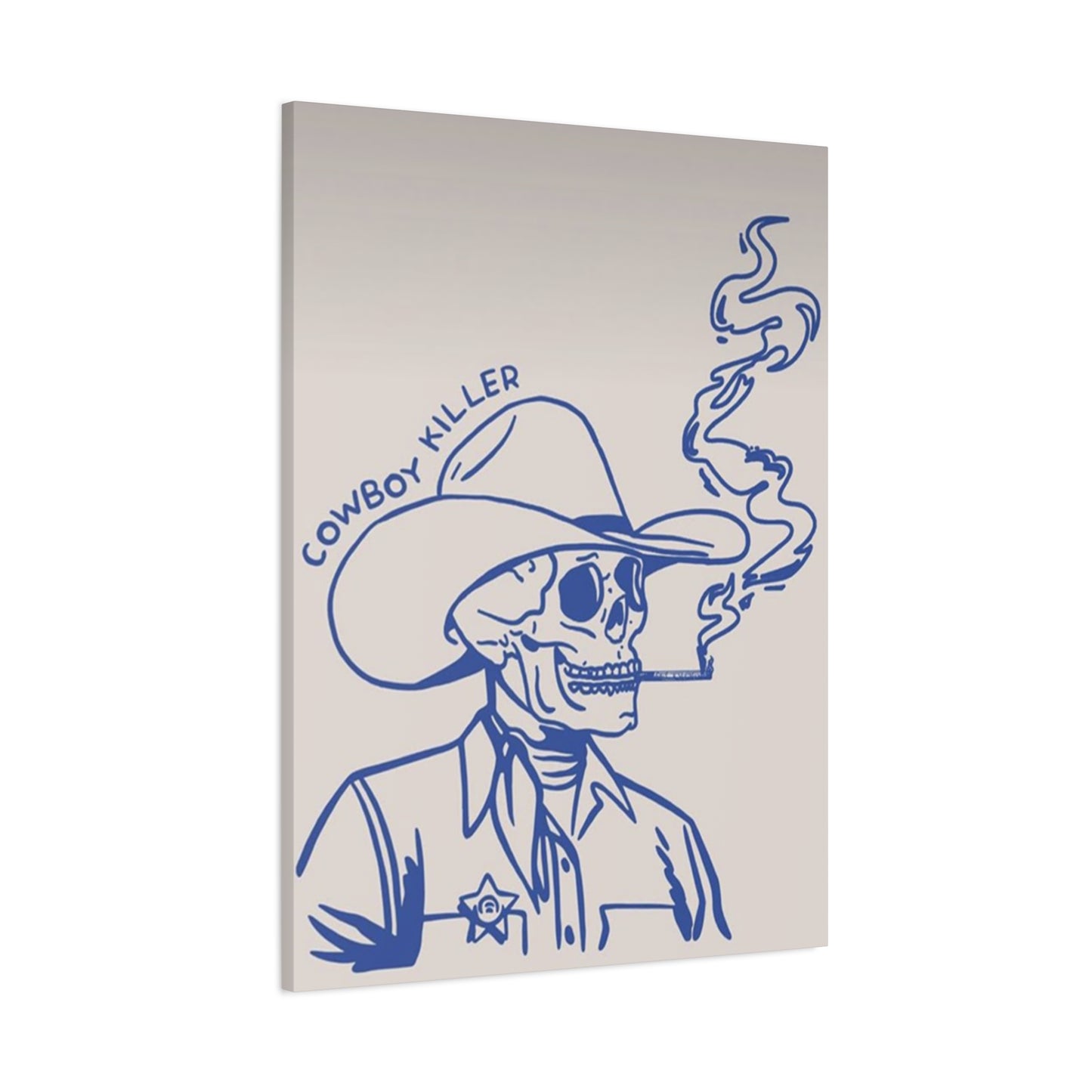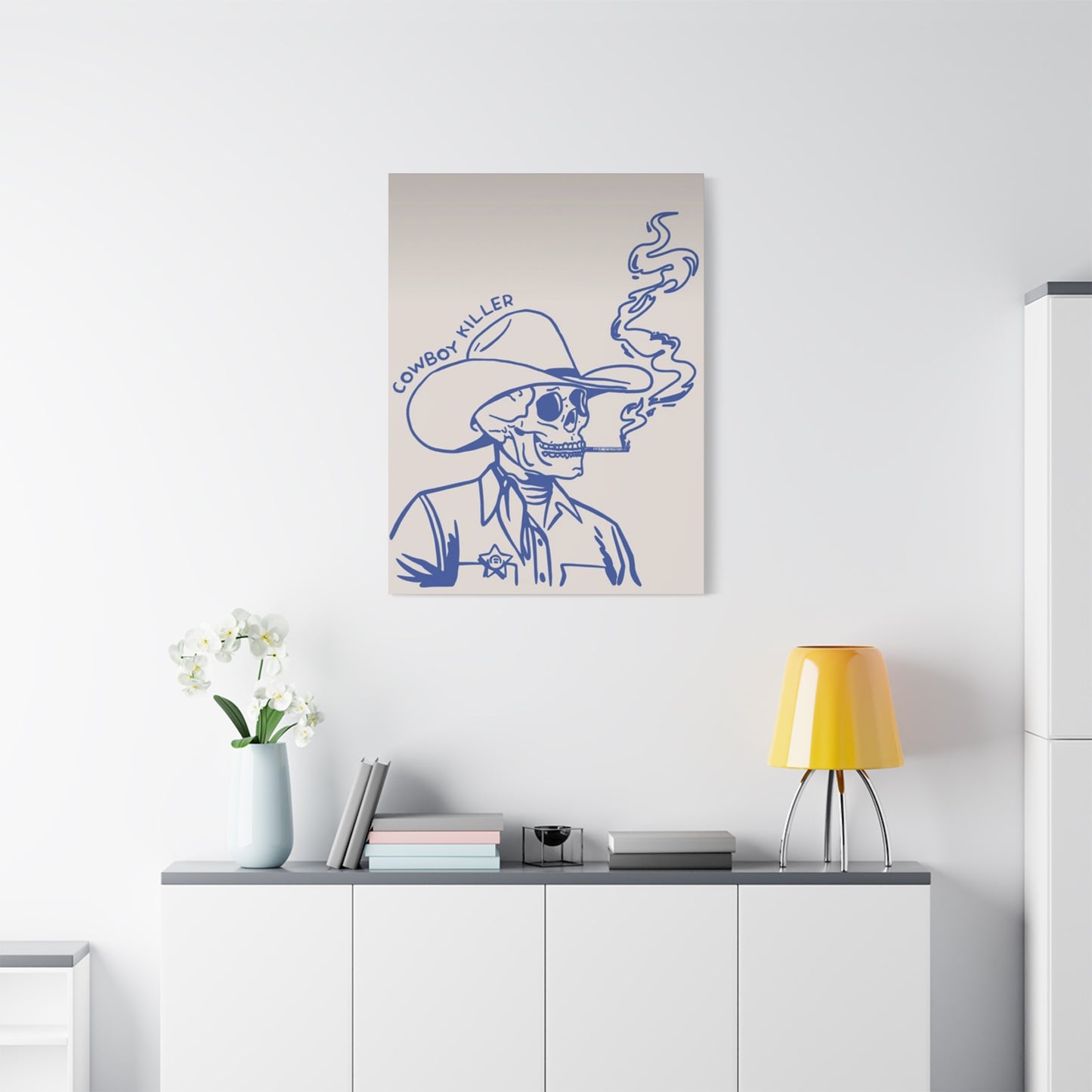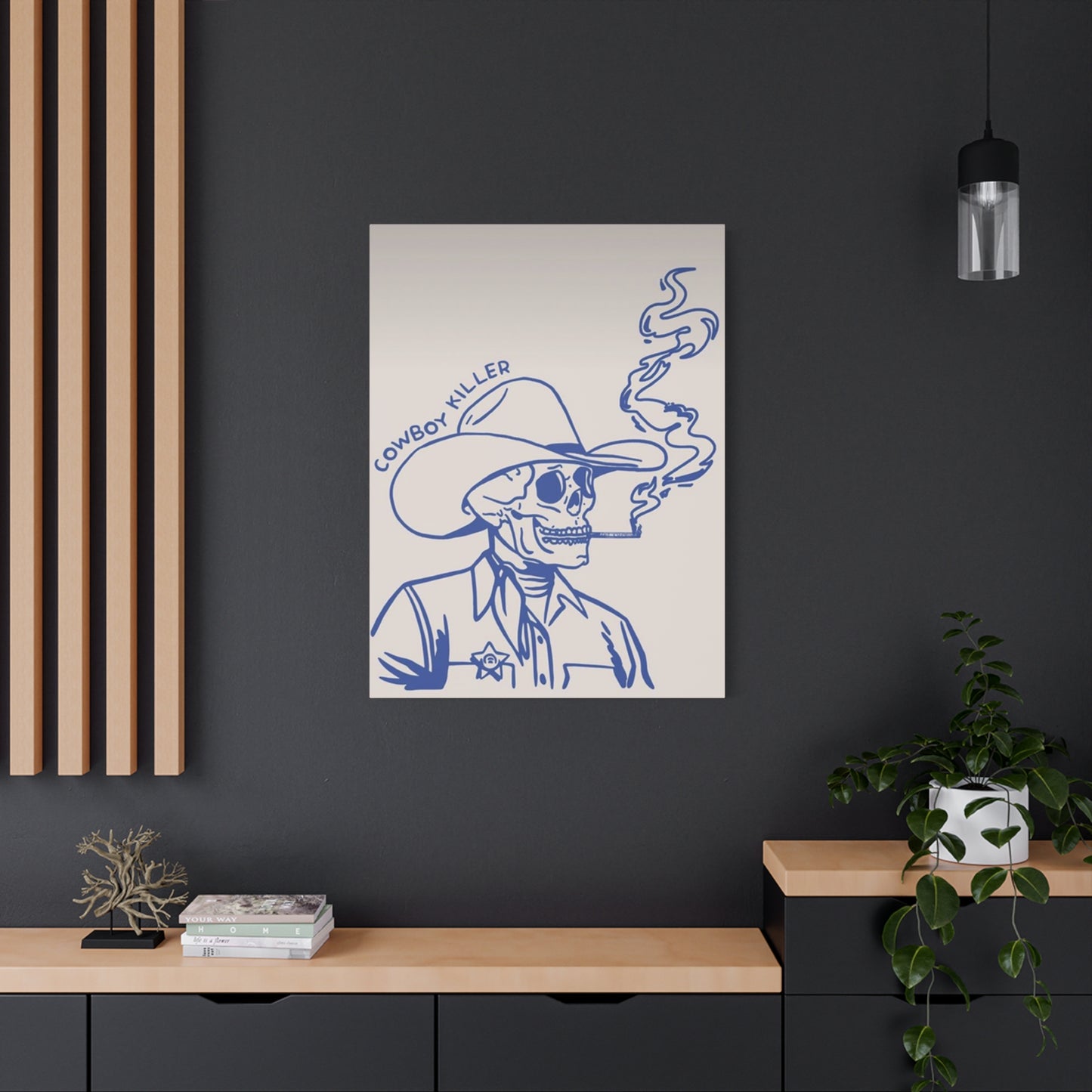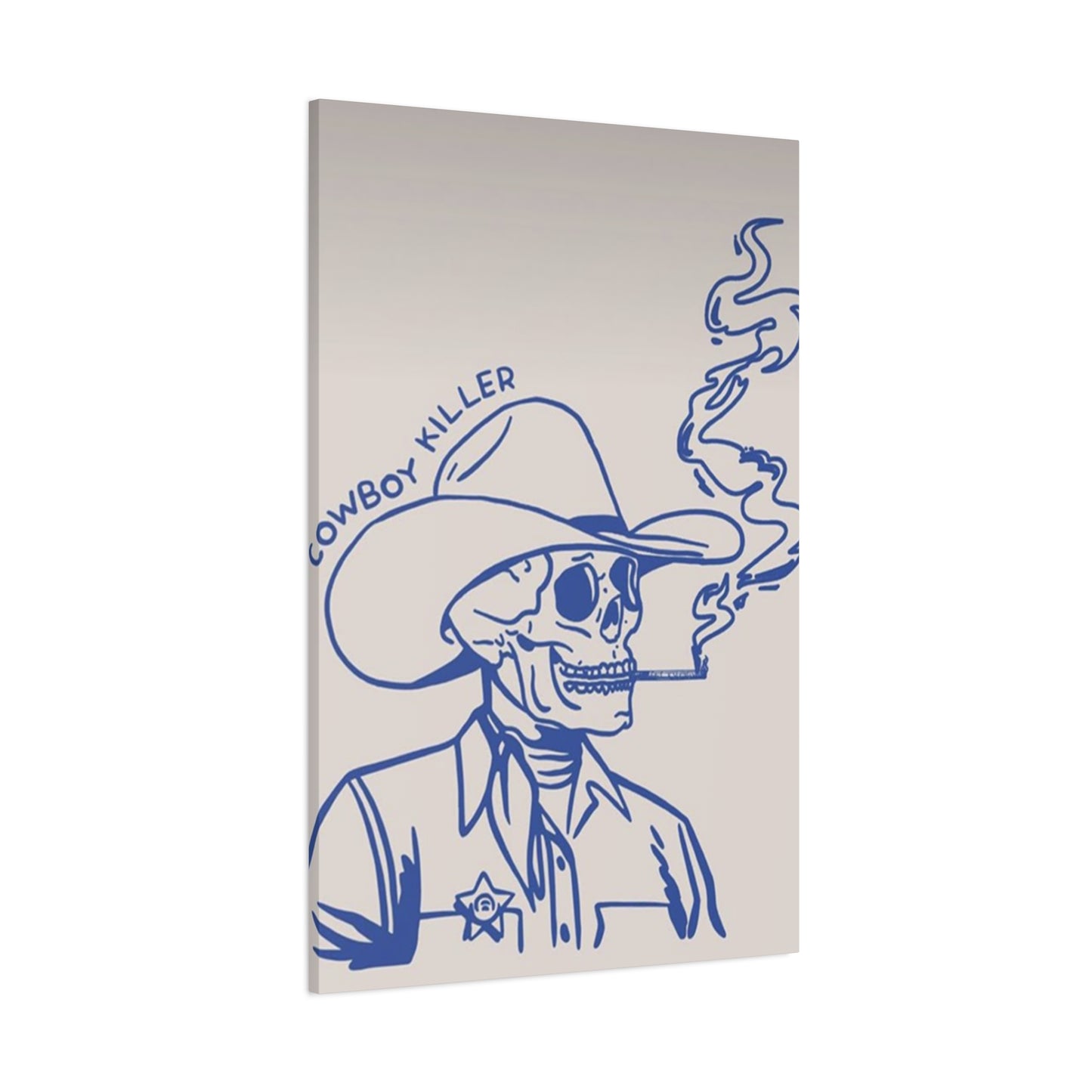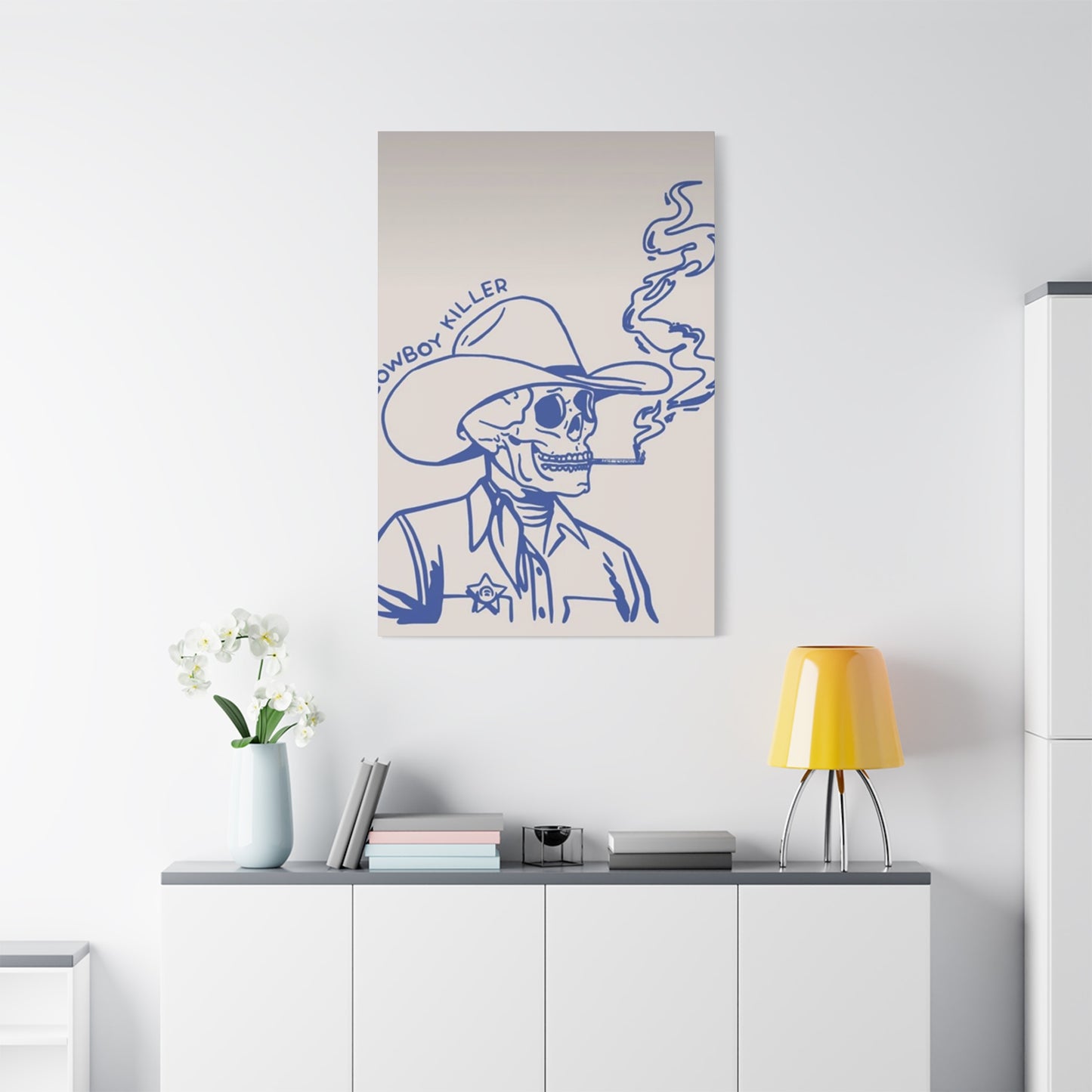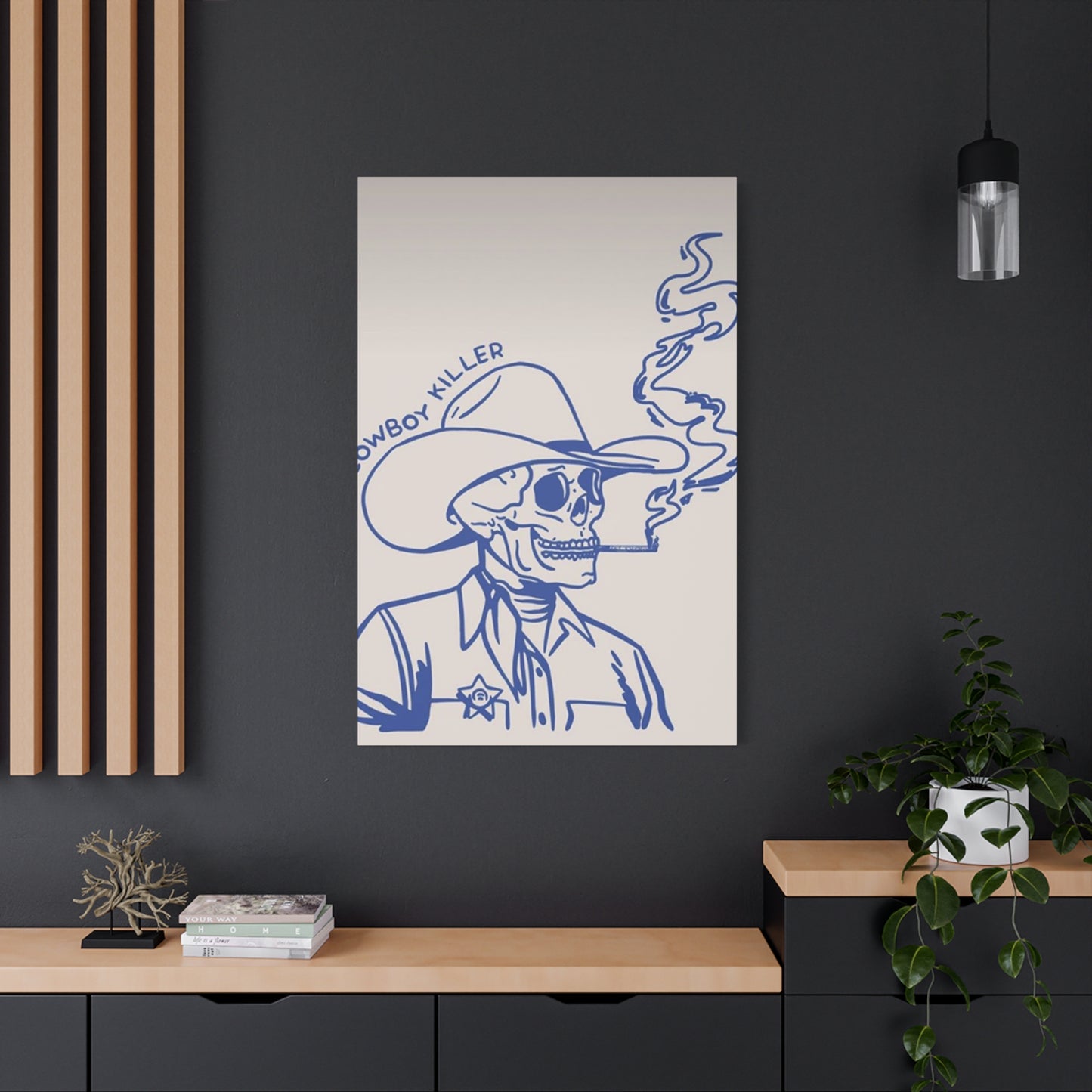Dark Riders of the West: The Grit and Drama of Cowboy Killer Sketch Wall Art
Sketch artwork possesses an undeniable magnetism that transforms ordinary cowboy imagery into something profoundly compelling. When applied to western outlaw themes, these hand-drawn pieces carry an authenticity that mass-produced prints simply cannot match. The deliberate imperfections, visible pencil strokes, and artistic interpretation breathe life into static portraits, creating visual narratives that speak to viewers on multiple levels.
The technique of sketching naturally lends itself to capturing the essence of rugged individualism that defines cowboy culture. Unlike polished paintings or digital artwork, sketches maintain an element of rawness that mirrors the untamed frontier lifestyle. Each line drawn by the artist's hand carries weight and intention, much like every decision made by the outlaws they depict carried consequences in the lawless territories of the Old West.
Modern collectors gravitate toward sketch-style cowboy artwork because it offers something increasingly rare in our digital age: genuine human craftsmanship. The visible texture of graphite on paper, the subtle gradations of light and shadow achieved through careful hatching techniques, and the deliberate choices made in composition all contribute to a viewing experience that feels intimate and personal. These pieces invite closer examination, rewarding viewers who take time to appreciate the technical skill required to capture character and emotion through simple graphite marks.
The artistic process behind cowboy sketches often involves extensive research into historical accuracy while maintaining creative freedom to interpret legendary figures. Artists study period clothing, weaponry, and facial features from historical photographs and accounts, then filter this information through their unique artistic vision. This blend of historical foundation and creative interpretation results in artwork that feels both authentic and fresh, appealing to history enthusiasts and art lovers alike.
Contemporary sketch artists working in the western genre often employ techniques that emphasize the dramatic contrasts inherent in outlaw narratives. Heavy shadows cast by wide-brimmed hats create mystery and intrigue, while precise attention to details like weathered leather holsters and worn fabric textures adds layers of storytelling to each piece. These technical choices serve the larger artistic goal of creating compelling visual narratives that capture the complex nature of frontier justice and moral ambiguity.
The psychological impact of sketch artwork extends beyond mere aesthetic appreciation. The unfinished quality inherent in many sketch styles mirrors the unresolved nature of many outlaw stories, where questions of right and wrong remain deliberately ambiguous. This artistic technique creates a perfect match between medium and message, allowing viewers to project their own interpretations onto the characters depicted while engaging with the fundamental themes of justice, survival, and moral complexity that define the western genre.
Monochrome Magic: The Power of Black-and-White Outlaw Portraits
Black-and-white artwork holds a timeless appeal that transcends fleeting color trends and design fads. In the realm of cowboy outlaw portraits, monochrome treatment serves multiple artistic and practical purposes that enhance both the visual impact and the thematic resonance of these powerful images. The absence of color forces viewers to focus on fundamental elements like composition, contrast, and emotional expression, creating a more intense and memorable viewing experience.
The historical connection between black-and-white photography and the documentation of the American West adds layers of authenticity to monochrome cowboy portraits. Many of the most iconic images from the frontier era were captured in black and white, creating a visual language that modern audiences automatically associate with historical authenticity and documentary truth. Contemporary artists who choose monochrome palettes tap into this established visual vocabulary, lending their creative interpretations an air of historical credibility.
From a design perspective, black-and-white cowboy portraits offer unmatched versatility in modern home environments. These pieces integrate seamlessly with existing color schemes without competing for attention or clashing with established palettes. Whether displayed in minimalist contemporary settings or rustic traditional environments, monochrome artwork maintains its visual impact while complementing rather than overwhelming surrounding design elements.
The technical challenges of creating compelling black-and-white portraits push artists to master fundamental skills that often get overlooked in color work. Without the emotional and symbolic weight of color to rely upon, artists must excel at capturing character through line quality, tonal relationships, and compositional choices. This constraint often results in stronger, more focused artwork that communicates its message with greater clarity and impact.
Monochrome outlaw portraits also benefit from the psychological associations that viewers bring to black-and-white imagery. These associations include concepts like timelessness, seriousness, sophistication, and artistic merit that enhance the perceived value and significance of the artwork. Viewers often spend more time contemplating black-and-white images, perhaps because the absence of color removes distractions and encourages deeper engagement with the subject matter.
The dramatic potential of high contrast black-and-white treatment perfectly matches the intense subject matter of outlaw imagery. Artists can create powerful focal points through strategic use of pure whites and deep blacks, while subtle gradations in between provide opportunities for nuanced character development. This technique allows for the creation of images that are simultaneously bold enough to command attention from across a room and detailed enough to reward close examination.
Contemporary collectors increasingly appreciate the investment potential of quality black-and-white artwork, recognizing that monochrome pieces often age more gracefully than their colorful counterparts. Without the risk of color trends dating the work or pigments fading over time, well-executed black-and-white cowboy portraits maintain their visual and monetary value more consistently than many other artistic approaches.
Merging Toughness with Elegance: Streamlined Outlaw Character Studies
The artistic challenge of combining masculine strength with refined aesthetic sensibility has found perfect expression in minimalist cowboy character studies. These pieces strip away extraneous details to focus on essential elements that define both the individual character and the broader archetype they represent. The result is artwork that maintains the rugged authenticity of traditional western imagery while appealing to contemporary tastes for clean, uncluttered design.
Minimalist approaches to outlaw portraiture require artists to make difficult decisions about which elements to include and which to eliminate. Every line, shadow, and texture must serve a purpose in the overall composition, creating a visual economy that mirrors the stripped-down lifestyle of frontier survivors. This artistic restraint often produces more powerful results than busy, detail-heavy alternatives, proving that sometimes less truly is more.
The psychology behind minimalist outlaw art taps into fundamental human responses to both simplicity and strength. Clean lines and uncluttered compositions create a sense of calm and order that contrasts beautifully with the chaotic nature of outlaw life. This juxtaposition creates visual tension that keeps viewers engaged while providing the peaceful aesthetic experience that modern homeowners seek in their personal environments.
Contemporary minimalist cowboy art often employs negative space as an active compositional element, allowing the viewer's imagination to fill in details that aren't explicitly drawn. This technique creates a collaborative viewing experience where each person may perceive slightly different elements or emotions in the same image. Such artwork grows more interesting over time as viewers discover new details or interpretations during repeated viewings.
The technical execution of minimalist outlaw portraits requires mastery of fundamental drawing principles that support maximum impact with minimum means. Artists must excel at capturing character through economical use of line weight variation, strategic placement of shadows, and careful attention to proportional relationships. These skills, when properly applied, result in artwork that appears effortless while actually requiring considerable expertise to execute successfully.
Market demand for minimalist western artwork reflects broader cultural trends toward simplified living and authentic experience. Modern collectors often prefer artwork that makes a strong statement without overwhelming their living environments, and streamlined outlaw portraits deliver exactly this balance. These pieces provide the masculine energy and historical connection that many buyers seek while maintaining the clean aesthetic that fits contemporary lifestyle preferences.
The versatility of minimalist cowboy art extends beyond simple compatibility with modern design trends. These pieces often work equally well in traditional and contemporary settings, bridging generational preferences and allowing families to display artwork that appeals to multiple family members with varying aesthetic preferences.
Creating Atmosphere with Outlaw Sketches in Modern Masculine Environments
The strategic placement of cowboy outlaw sketches can transform ordinary living environments into sophisticated masculine retreats that honor both historical heritage and contemporary design principles. These pieces work particularly well in settings that already embrace industrial or rustic design elements, where the raw authenticity of sketch artwork complements existing material choices like exposed brick, weathered wood, and metal fixtures.
Modern masculine design philosophy emphasizes the importance of authentic materials and honest construction methods that mirror the straightforward approach to life exemplified by frontier figures. Outlaw sketches embody these same principles through their visible artistic process and unpolished aesthetic appeal. When properly integrated into contemporary environments, these pieces serve as focal points that anchor entire room designs while providing conversation starters that reflect the homeowner's appreciation for both art and history.
The scale and proportion of outlaw sketches must be carefully considered within the context of modern room layouts and furniture arrangements. Large-scale pieces can serve as dramatic focal points above seating areas or fireplaces, while smaller works might be grouped together to create dynamic gallery arrangements. The key is to ensure that the artwork complements rather than competes with existing architectural features and furniture selections.
Lighting plays a crucial role in maximizing the impact of sketch artwork within contemporary masculine environments. Properly positioned track lighting or picture lights can highlight the textural qualities of graphite work while creating dramatic shadows that enhance the mysterious appeal of outlaw imagery. Natural light sources should also be considered, as the changing quality of daylight throughout the day can reveal different aspects of well-executed sketch work.
The psychological impact of displaying outlaw artwork extends beyond simple aesthetic appreciation to encompass deeper themes of independence, self-reliance, and moral complexity that resonate with contemporary men facing their own challenges in modern life. These pieces serve as daily reminders of values like courage, determination, and individual responsibility that remain relevant despite dramatic changes in lifestyle and technology.
Contemporary masculine design increasingly emphasizes the importance of personal storytelling through carefully curated object selection. Outlaw sketches provide an opportunity for homeowners to express their appreciation for American history, artistic craftsmanship, and complex moral narratives without resorting to obvious or heavy-handed display techniques. These pieces allow for subtle communication of personal values and interests.
The integration of outlaw sketches into modern masculine environments requires careful attention to supporting elements like framing choices, wall colors, and adjacent decorative objects. Simple, high-quality frames that don't compete with the artwork itself often prove most effective, while wall colors should be chosen to enhance rather than distract from the tonal qualities of the sketch work.
Developing Cohesive Dark Western Gallery Collections
Building a successful dark western gallery collection requires strategic planning and careful consideration of how individual pieces will work together to create a unified visual experience. The most effective collections balance variety with consistency, offering enough diversity to maintain viewer interest while maintaining enough coherence to create a satisfying overall impression.
Successful collectors of dark western artwork often begin with a clear vision of the story they want to tell through their collection. This might focus on a particular historical period, a specific type of outlaw character, or a certain artistic technique or style. Having this guiding principle helps ensure that new acquisitions enhance rather than dilute the impact of existing pieces.
The curation process for dark western collections involves careful consideration of both artistic quality and thematic relevance. Each piece must meet high standards for technical execution while contributing something unique to the overall narrative being constructed. This dual focus on quality and relevance helps prevent collections from becoming either too random or too repetitive.
Scale and proportion play crucial roles in successful gallery arrangements, with larger pieces typically serving as anchor points around which smaller works are arranged. The goal is to create visual flow that guides viewers naturally from one piece to the next while allowing each individual work to maintain its own identity within the larger composition.
Color coordination becomes particularly important when working with dark western themes, as these pieces often employ similar palettes of blacks, whites, and earth tones. Successful curators learn to identify subtle variations in tone and texture that can be used to create visual interest and prevent collections from appearing monotonous or overwhelming.
The physical arrangement of dark western collections requires careful attention to spacing, height relationships, and viewing angles that accommodate the dramatic nature of outlaw imagery. These pieces often benefit from slightly more generous spacing than lighter, more decorative artwork, allowing each piece to maintain its psychological impact without being diminished by competing visual elements.
Contemporary collectors of dark western art often discover that their collections evolve and mature over time as they develop more sophisticated understanding of both the historical context and the artistic techniques that make certain pieces particularly compelling. This evolution process adds personal satisfaction to the collecting experience while potentially increasing the investment value of carefully chosen pieces.
Professional framing and presentation become increasingly important as dark western collections grow in size and value. High-quality conservation framing not only protects valuable artwork but also enhances its visual impact through carefully chosen matting and frame selections that complement the artwork without overwhelming it.
Dangerous Appeal: Incorporating Edgy Western Artwork into Home Design
The integration of edgy western artwork into contemporary home design requires a sophisticated understanding of how to balance provocative imagery with livable, comfortable environments. Successful incorporation of these powerful pieces depends on thoughtful placement decisions that honor both the artistic integrity of the work and the practical needs of modern family life.
Edgy western artwork often features themes of violence, moral ambiguity, and social conflict that require careful consideration when selecting appropriate display locations within the home. These pieces typically work best in adult-oriented environments like home offices, studies, or master bedroom suites where their intense subject matter can be appreciated without creating discomfort for younger family members or casual visitors.
The psychological impact of dangerous western imagery can be channeled positively when these pieces are used to create focused environments for contemplation, work, or relaxation. Many collectors find that the intensity of outlaw artwork helps them maintain concentration during demanding intellectual tasks or provides inspiration during challenging personal periods.
Contemporary design principles that emphasize authentic materials and honest construction methods provide natural opportunities for incorporating edgy western artwork. Environments that already feature elements like exposed steel, reclaimed wood, or industrial fixtures often complement the raw energy of outlaw imagery without requiring significant modifications to existing design schemes.
The scale and proportion of dangerous western artwork must be carefully calibrated to avoid overwhelming living environments while still maintaining the dramatic impact that makes these pieces compelling. Large-scale works might be reserved for spacious areas with high ceilings, while smaller pieces can be used to add intensity to more intimate settings.
Lighting design becomes particularly crucial when displaying edgy western artwork, as proper illumination can enhance the mysterious and dramatic qualities that make these pieces appealing while preventing them from appearing too dark or foreboding in family living areas. Strategic use of accent lighting can highlight positive aspects of the artwork while de-emphasizing elements that might be too intense for everyday viewing.
The selection of supporting decorative elements requires careful consideration when working with dangerous western themes. Accessories and furniture choices should enhance rather than compete with the dramatic nature of the artwork while maintaining overall environmental comfort and functionality.
Contemporary collectors often discover that edgy western artwork serves as excellent conversation starters that allow them to share their interests in history, art, and complex moral themes with guests and family members. These pieces provide natural opportunities for discussing important topics like justice, personal responsibility, and moral decision-making in ways that feel organic and engaging.
Optimal Settings for Dark Cowboy Sketch Displays
The physical environment where dark cowboy sketches are displayed significantly impacts their visual effectiveness and the emotional response they generate in viewers. Successful placement requires understanding how factors like lighting, wall color, surrounding architecture, and furniture arrangement all contribute to the overall viewing experience.
Room function plays a crucial role in determining appropriate locations for dark cowboy artwork. Home offices and studies provide ideal settings where the contemplative nature of these pieces can enhance focus and decision-making activities. Libraries and reading rooms also work well, as the quiet atmosphere complements the introspective qualities often found in well-executed cowboy portraits.
Architectural features like exposed beams, brick walls, and industrial fixtures create natural compatibility with dark western artwork by establishing environmental context that supports the rugged themes depicted in the images. These elements help create cohesive design schemes where the artwork feels integrated rather than merely attached to existing structures.
Ceiling height considerations become important when selecting and positioning large-scale cowboy sketches, as adequate vertical clearance allows viewers to appreciate the full impact of dramatic compositions without feeling crowded or overwhelmed. High ceilings also provide opportunities for dramatic lighting effects that can enhance the mysterious qualities inherent in outlaw imagery.
Traffic flow patterns within rooms must be considered when positioning dark cowboy artwork to ensure that pieces can be properly viewed without interfering with normal movement through the area. Strategic placement near natural stopping points like seating areas or work surfaces allows for contemplative viewing while maintaining functional room usage.
Privacy levels within different areas of the home affect the appropriateness of various types of dark western imagery. More intense or violent themes might be reserved for private areas where family members can choose their level of exposure, while lighter or more heroic depictions might work well in common areas where they can be appreciated by all household members.
Contemporary lighting technology offers numerous options for enhancing dark cowboy sketches through strategic illumination that brings out textural qualities and tonal subtleties that might otherwise be missed. LED systems allow for precise control over color temperature and intensity, enabling homeowners to adjust lighting to complement different moods or times of day.
Climate control considerations become important for preserving valuable cowboy sketch artwork, as fluctuations in temperature and humidity can damage paper-based media over time. Proper environmental controls protect investments while ensuring that artwork continues to look its best throughout its display lifetime.
Western Noir: The Emerging Trend in Contemporary Wall Décor
Western noir represents a sophisticated evolution of traditional cowboy imagery that combines classic frontier themes with modern artistic sensibilities and psychological complexity. This emerging trend appeals to contemporary audiences who appreciate both the historical significance of western culture and the artistic sophistication of film noir aesthetics.
The visual characteristics of western noir artwork typically include high contrast lighting, dramatic shadow effects, and compositions that emphasize mystery and moral ambiguity over straightforward heroic narratives. These techniques create artwork that feels both historically grounded and thoroughly contemporary, appealing to collectors who want pieces that honor the past while speaking to present-day concerns.
Market demand for western noir artwork reflects broader cultural trends toward complexity and authenticity in home décor choices. Contemporary consumers increasingly seek pieces that offer multiple layers of meaning and interpretation rather than simple decorative effects, and western noir provides exactly this type of rich, engaging content.
The artistic techniques employed in western noir often draw inspiration from both traditional western illustration and classic film cinematography, creating hybrid approaches that feel fresh and innovative while maintaining connection to established visual traditions. Artists working in this style must master both historical accuracy and contemporary artistic methods to create convincing and compelling results.
Color palettes in western noir artwork typically emphasize earth tones, deep blues, and dramatic contrasts between light and shadow that create moody, atmospheric effects reminiscent of classic detective films transferred to frontier settings. These color choices help establish emotional tone while maintaining the masculine appeal that makes western themes popular with modern collectors.
The psychological appeal of western noir lies in its ability to address complex moral themes through the familiar framework of western mythology. These pieces allow viewers to explore questions about justice, revenge, and personal responsibility within contexts that feel both historically distant and personally relevant.
Contemporary artists working in western noir styles often incorporate elements from other artistic movements like abstract expressionism or photorealism to create unique hybrid approaches that distinguish their work from more traditional western illustration. This artistic innovation helps ensure that western noir continues to evolve and remain relevant to changing aesthetic preferences.
The commercial success of western noir reflects its ability to bridge generational preferences and appeal to both traditional western enthusiasts and younger collectors who might otherwise find standard cowboy imagery too simplistic or outdated. This broad appeal makes western noir an attractive investment category for both personal enjoyment and long-term value appreciation.
Symbolic Meanings Behind Contemporary Outlaw Artwork
Contemporary outlaw artwork operates on multiple symbolic levels that extend far beyond simple historical representation to encompass complex themes of individual freedom, moral complexity, and resistance to authority that resonate strongly with modern audiences facing their own social and personal challenges.
The figure of the outlaw serves as a powerful symbol of individual agency in societies that often seem to offer limited opportunities for personal expression and authentic self-determination. Modern viewers connect with outlaw imagery because it represents the possibility of choosing one's own path despite social pressure to conform to established norms and expectations.
Symbolic representations of weapons in outlaw artwork carry meanings that extend beyond simple violence to encompass themes of personal responsibility, self-reliance, and the willingness to defend one's principles despite potential consequences. These symbols speak to contemporary concerns about personal security and the importance of maintaining individual rights in complex political environments.
The frontier setting depicted in most outlaw artwork symbolizes opportunities for reinvention and escape from constraining social structures that many modern individuals find appealing despite the obvious dangers and hardships involved. This symbolic landscape represents possibilities for authentic living that seem increasingly rare in contemporary society.
Clothing and accessories featured in outlaw imagery carry symbolic weight related to functionality, durability, and practical adaptation to challenging environments. Modern audiences appreciate these symbols of competence and preparation that contrast sharply with the disposable consumer culture that dominates contemporary life.
Horse imagery in outlaw artwork symbolizes freedom, power, and the ability to move between different worlds and identities as circumstances require. These symbols appeal to contemporary viewers who often feel trapped by technological connectivity and social obligations that make true escape seem impossible.
Landscape elements in outlaw artwork typically symbolize both opportunity and danger, representing the dual nature of freedom that comes with both possibilities for success and risks of failure. These symbolic landscapes reflect contemporary anxieties about career choices, relationship decisions, and other life changes that involve significant uncertainty.
The moral ambiguity inherent in outlaw symbolism allows contemporary viewers to explore complex ethical questions through the safety of artistic representation rather than real-world consequences. This symbolic framework provides opportunities for philosophical contemplation that many modern individuals find valuable and enriching.
Firearms, Shadows, and Moral Complexity in Sketch Artwork
The artistic representation of firearms in cowboy sketch artwork requires careful consideration of both historical accuracy and contemporary symbolic meaning to create pieces that honor the past while remaining relevant to present-day audiences. These elements serve as focal points that concentrate the dramatic tension inherent in outlaw narratives.
Shadow work in sketch artwork provides opportunities for artists to explore themes of hidden identity, moral ambiguity, and the complexity of human nature that define the most compelling outlaw characters. Strategic use of shadows can suggest psychological depth while maintaining enough mystery to allow viewers to project their own interpretations onto the characters depicted.
The technical execution of firearm details in sketch work requires extensive research into historical accuracy combined with artistic skills needed to render complex mechanical objects convincingly within the constraints of graphite media. Artists must balance authenticity with artistic interpretation to create images that satisfy both history enthusiasts and art collectors.
Contemporary audiences bring complex attitudes toward firearm imagery that artists must navigate carefully when creating outlaw sketches intended for modern home display. Successful pieces manage to honor the historical reality of frontier life while avoiding glorification of violence or insensitivity toward contemporary concerns about gun violence.
The symbolic weight of firearms in outlaw imagery extends beyond simple weapons to represent broader themes of personal power, moral responsibility, and the consequences of individual choices. These symbols carry particular resonance for contemporary audiences grappling with questions about personal agency and social responsibility in complex modern environments.
Shadow techniques in graphite sketch work require mastery of various artistic methods including hatching, cross-hatching, and blending to create convincing three-dimensional effects that enhance the dramatic impact of outlaw subjects. These technical skills separate professional-quality artwork from amateur attempts at similar themes.
The psychological impact of firearm imagery combined with dramatic shadow work can create powerful emotional responses in viewers that range from excitement and admiration to contemplation and concern. Successful artists learn to calibrate these effects to achieve their intended artistic goals while remaining sensitive to audience reactions.
Historical context becomes crucial when depicting firearms in outlaw artwork, as accuracy in details like gun types, holster styles, and carrying methods helps establish credibility that allows viewers to engage more fully with the artistic interpretation being presented. Research and attention to detail separate quality work from generic representations.
Psychological Dimensions of Outlaw-Themed Home Décor
The decision to display outlaw-themed artwork in personal living environments reflects complex psychological motivations that extend far beyond simple aesthetic preferences to encompass deeper needs for identity expression, moral exploration, and connection to cultural narratives that emphasize individual strength and independence.
Psychological research suggests that individuals who gravitate toward outlaw imagery often possess strong needs for autonomy and self-determination that may be constrained by their contemporary social and professional circumstances. Displaying such artwork provides a safe way to maintain connection to values like independence and self-reliance that remain important despite modern life's emphasis on cooperation and compliance.
The appeal of morally ambiguous characters in outlaw artwork allows viewers to explore aspects of their own personality that might otherwise remain suppressed in socially conforming environments. These artistic representations provide opportunities for vicarious experience of rebellion and rule-breaking that most individuals cannot or choose not to pursue in their actual lives.
Masculine identity exploration represents another significant psychological dimension of outlaw-themed décor, as these images often embody traditional concepts of masculinity that emphasize physical courage, moral certainty, and individual responsibility. Contemporary men may find these representations particularly appealing as counterbalances to modern social expectations that sometimes seem to devalue traditional masculine qualities.
The historical distance inherent in western outlaw imagery provides psychological safety for exploring themes of violence, revenge, and moral complexity that might be too disturbing or controversial if presented in contemporary contexts. This temporal separation allows for philosophical contemplation without immediate personal relevance or social consequences.
Collector psychology plays an important role in the accumulation of outlaw-themed artwork, as the process of building coherent collections provides opportunities for identity development and social connection with like-minded individuals who share similar interests and values. The collecting process itself becomes a form of self-expression and personal narrative construction.
The presence of outlaw artwork in living environments can serve psychological functions related to inspiration and motivation, as these images often remind viewers of values like courage, determination, and willingness to take risks that may be relevant to contemporary challenges and decision-making situations.
Conversation and social interaction benefits emerge when outlaw artwork serves as catalyst for discussions about history, morality, and personal values with family members and guests. These interactions can strengthen relationships while providing opportunities for meaningful exchange of ideas and perspectives.
Heroic Outlaws vs Villainous Characters: Artistic Interpretation Perspectives
The artistic interpretation of outlaw characters requires sophisticated understanding of how visual elements can be manipulated to suggest different moral perspectives on the same historical figures, creating artwork that allows viewers to engage with complex questions about justice, heroism, and moral relativism.
Traditional heroic interpretations of outlaw figures typically emphasize physical attractiveness, confident posture, and noble expressions that suggest internal moral conviction despite external circumstances that place these individuals outside legal boundaries. These artistic choices encourage viewer sympathy and identification with characters who might otherwise be seen as criminal or antisocial.
Villainous interpretations of the same historical figures often employ darker tonalities, more aggressive poses, and facial expressions that suggest cruelty or moral corruption rather than principled rebellion against unjust authority. These artistic decisions create very different emotional responses while depicting essentially the same historical individuals.
Contemporary artists often choose to present outlaw figures in ways that deliberately blur the distinction between heroic and villainous characteristics, creating complex portraits that reflect modern understanding of human psychology and moral ambiguity. These nuanced interpretations require sophisticated artistic skills and historical understanding.
The historical context surrounding specific outlaw figures influences how contemporary artists choose to interpret and present these individuals, with some characters like Billy the Kid receiving generally sympathetic treatment while others like John Wesley Hardin are more often portrayed as dangerous criminals rather than romantic rebels.
Viewer psychology plays a crucial role in determining how different artistic interpretations of outlaw characters are received and understood, with personal experiences and cultural background significantly influencing whether individuals see particular figures as heroes, villains, or complex human beings who defy simple categorization.
Artistic technique can be used to subtly influence viewer perception of outlaw characters through choices in lighting, composition, and detail emphasis that either enhance or diminish various character traits. Skilled artists understand how to use these tools to achieve their desired interpretive goals.
The commercial market for outlaw artwork often favors heroic interpretations that allow buyers to display images that enhance rather than disturb their living environments, though niche markets exist for darker interpretations that appeal to collectors interested in exploring more complex psychological and moral themes.
Exploring Shadow Themes in Wild West Artistic Expression
Shadow themes in Wild West artwork operate both literally and metaphorically to create layers of meaning that enhance the dramatic impact and psychological complexity of outlaw imagery while providing opportunities for artistic exploration of concepts like hidden identity, moral ambiguity, and the dual nature of human character.
Literal shadow work in western sketches requires technical mastery of light and dark relationships that can create convincing three-dimensional effects while serving compositional goals related to focal point emphasis and dramatic tension creation. These skills separate professional-quality artwork from amateur attempts at similar subjects.
Metaphorical shadow themes allow artists to explore psychological concepts related to the hidden aspects of personality that emerge under extreme circumstances like those faced by frontier individuals. These interpretations add intellectual depth to artwork that might otherwise function purely as decorative or historical representation.
The artistic tradition of using shadows to suggest mystery and danger has particular relevance in western outlaw imagery, where moral ambiguity and hidden motivations often drive character development and narrative tension. Artists can use shadow techniques to enhance these thematic elements without resorting to explicit visual elements.
Contemporary psychological understanding of shadow archetypes provides modern artists with sophisticated frameworks for exploring the complex motivations and internal conflicts that defined many historical outlaw figures. These approaches create artwork that speaks to present-day concerns while maintaining historical authenticity.
Technical approaches to shadow creation in sketch media include various hatching and blending techniques that allow artists to achieve different effects ranging from subtle suggestion to dramatic contrast. Mastery of these techniques enables artists to tailor their shadow work to serve specific compositional and thematic goals.
The symbolic use of shadows in western artwork often represents concepts like the unknown future, hidden dangers, moral uncertainty, and the consequences of past actions that continue to influence present circumstances. These symbolic elements add layers of meaning that reward careful viewing and contemplation.
Cultural interpretations of shadow imagery vary significantly between different audiences and time periods, requiring contemporary artists to consider how their shadow work will be understood by modern viewers who may bring different associations and expectations to western outlaw imagery than previous generations.
Market Dynamics and Collector Interest in Dark Western Artwork
The contemporary market for dark western artwork reflects complex intersection of factors including historical interest, artistic quality, decorative appeal, and investment potential that create diverse collecting opportunities for enthusiasts with varying budgets and aesthetic preferences.
Collector demographics for dark western art span multiple generations and income levels, with particular strength among middle-aged professionals who possess both the financial resources to acquire quality pieces and the personal interest in themes of individual autonomy and moral complexity that resonate with their own life experiences.
Price factors in the dark western art market depend heavily on artist reputation, technical quality, historical accuracy, and provenance documentation, with original sketches commanding significantly higher prices than prints or reproductions regardless of subject matter similarities.
Regional variations in collector interest typically show stronger markets in western and southwestern United States where historical connection to frontier culture remains culturally significant, though growing interest in eastern markets suggests broader national appeal for quality dark western artwork.
Investment potential for dark western art depends on multiple factors including artist career trajectory, artwork condition, market trends, and broader cultural interest in western themes that can fluctuate based on popular media representation and social attitudes toward historical subjects.
Authentication issues become particularly important in dark western art markets where the combination of high value and relatively recent creation dates makes forgery and misattribution significant concerns for serious collectors and investors.
Gallery representation for dark western artists varies widely, with some working through traditional western art galleries while others find success in contemporary art markets that appreciate the psychological complexity and technical sophistication of quality outlaw imagery.
Online market platforms have expanded access to dark western artwork for both artists and collectors, creating new opportunities for market development while also increasing competition and requiring greater attention to marketing and presentation quality.
Technical Artistic Methods in Outlaw Portrait Creation
The creation of compelling outlaw portraits requires mastery of multiple technical skills including accurate proportion rendering, convincing texture representation, effective shadow manipulation, and compositional arrangement that serves both aesthetic and narrative goals while maintaining historical authenticity.
Proportional accuracy in outlaw portraiture demands thorough understanding of human anatomical relationships combined with ability to adapt these standards to accommodate individual character features and artistic interpretation goals without sacrificing believability or visual appeal.
Texture rendering techniques allow artists to differentiate between various material surfaces including weathered skin, worn leather, coarse fabric, and metal surfaces that typically appear in outlaw portraits. These skills contribute significantly to overall image credibility and viewer engagement.
Facial feature interpretation requires balancing historical accuracy with artistic license to create portraits that capture both physical likeness and psychological character while remaining visually compelling for contemporary audiences with different aesthetic expectations than historical viewers.
Clothing and accessory details demand extensive research into period-appropriate styles, construction methods, and wear patterns that help establish historical context while providing opportunities for artistic interpretation and personal style expression within historically accurate parameters.
Background integration techniques allow artists to create environmental context for outlaw portraits without overwhelming the primary subject matter, requiring careful attention to tonal relationships and compositional balance that supports rather than competes with character development.
Medium-specific techniques for graphite work include various hatching patterns, blending methods, and erasing techniques that enable artists to achieve wide ranges of tonal values and textural effects necessary for convincing outlaw portrait creation within the constraints of monochrome media.
Reference material utilization involves combining historical photographs, period artifacts, contemporary model studies, and artistic imagination to create portraits that feel both historically grounded and artistically fresh while avoiding direct copying of existing images.
Cultural Impact and Social Commentary Through Outlaw Imagery
Outlaw imagery in contemporary art serves as a vehicle for social commentary that addresses current issues through historical metaphor, allowing artists and viewers to explore complex political and social themes within established cultural narratives that provide both context and psychological distance from immediate controversies.
Historical parallels between frontier lawlessness and contemporary social conditions provide rich opportunities for artistic exploration of themes like government authority, individual rights, economic inequality, and social justice that remain relevant despite dramatic changes in technology and social organization.
Cultural mythology surrounding outlaw figures continues to evolve in response to changing social values and historical understanding, creating opportunities for contemporary artists to reinterpret familiar characters in ways that speak to present-day concerns while maintaining connection to established narrative traditions.
Political commentary through outlaw imagery allows artists to address controversial topics indirectly by placing contemporary concerns within historical contexts that feel safer and less threatening than direct political statements while maintaining relevance and emotional impact.
Social criticism embedded in outlaw artwork often focuses on themes like institutional corruption, abuse of authority, economic exploitation, and social inequality that define frontier conditions but continue to influence contemporary American society in evolved but recognizable forms.
Cultural identity exploration through outlaw themes provides opportunities for artists and viewers to examine American national character and values through historical figures who embody both positive and negative aspects of individualism, self-reliance, and resistance to authority.
Generational perspectives on outlaw imagery vary significantly, with older collectors often emphasizing historical accuracy and traditional heroic interpretations while younger audiences may be more interested in psychological complexity and social criticism that challenges rather than celebrates frontier violence.
International reception of American outlaw imagery reflects global fascination with frontier mythology combined with criticism of American individualism and violence that creates complex market dynamics for artists seeking to reach audiences beyond domestic borders.
Preservation and Care of Graphite-Based Western Artwork
Proper preservation of graphite-based western artwork requires understanding of both general conservation principles and specific challenges posed by this particular medium, including susceptibility to smudging, fading, environmental damage, and handling-related deterioration that can significantly impact both aesthetic appeal and monetary value.
Environmental control factors including temperature, humidity, light exposure, and air quality must be carefully managed to prevent deterioration of paper supports and graphite media that form the foundation of sketch-based western artwork. Professional conservation standards provide guidance for optimal storage and display conditions.
Framing considerations for graphite artwork include selection of archival materials, proper spacing between artwork and glazing, ventilation allowances, and UV protection that prevent both immediate damage and long-term deterioration while maintaining optimal viewing quality.
Handling protocols for valuable graphite artwork emphasize minimizing direct contact, using appropriate support methods during movement and examination, and avoiding exposure to substances like oils, moisture, and cleaning chemicals that can cause immediate or progressive damage.
Cleaning techniques for graphite artwork require extreme care and professional expertise to avoid removing original material while addressing accumulation of surface dust and pollutants that can diminish visual quality over time. Amateur cleaning attempts often cause irreversible damage.
Conclusion
Cowboy Killer Sketch Wall Art delivers a gritty, bold, and evocative aesthetic that speaks to lovers of Western culture, noir art, and rebellious storytelling. This genre-defying artwork fuses classic cowboy iconography with darker, edgier themes—often portraying lone gunmen, shadowy standoffs, or symbolic imagery that explores justice, revenge, and the blurred lines between hero and outlaw. For those seeking wall art that doesn’t just decorate but tells a story, Cowboy Killer sketches bring an undeniable depth and cinematic intensity to any space.
What makes this type of wall art so compelling is its raw, unfiltered energy. The sketch style—typically done in black ink, charcoal, or graphite—gives each piece a sense of movement and urgency. Unlike polished paintings or digital illustrations, these works embrace imperfection, using bold strokes and high contrast to capture the emotion and tension of the Wild West reimagined through a darker, more stylized lens. It’s the art of myth-making, told in pencil and paper.
Cowboy Killer Sketch Wall Art fits seamlessly into a variety of interiors, especially those with industrial, rustic, or minimalist themes. A single dramatic piece can elevate a modern loft, man cave, creative studio, or bar area, becoming an immediate focal point that draws eyes and invites interpretation. Whether the subject is a masked outlaw, a deserted western street, or a dramatic duel under a blood-red sun, these artworks conjure a mood that’s intense, cinematic, and captivating.
Beyond aesthetic value, this art also connects with deeper themes—justice, rebellion, solitude, and survival. These aren’t just cowboys in hats; they’re complex figures whose stories are left unfinished, allowing viewers to project their own meaning and emotion onto the piece. It’s this narrative quality that makes Cowboy Killer art so versatile and personal. You don’t just hang it—you engage with it.
In conclusion, Cowboy Killer Sketch Wall Art is a powerful choice for those who want to break from traditional decor and embrace something that feels raw, rugged, and rich in storytelling. It’s ideal for anyone who values strong visual statements, iconic Western motifs, and the allure of danger and mystery. Whether you’re decorating a space that reflects your love for Western film, graphic novels, or outlaw legends—or simply want something unforgettable—this genre of art offers a visually striking and emotionally resonant experience. Hang it with pride, and let the legend live on through the lines, shadows, and scars of the sketch.

















